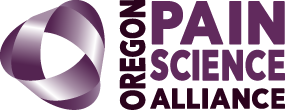Resource Elements
- Comparing Mind-Body Duality with the science-based perspective of emergent brain processes and active personal choices.
- Describing practices with clients to aid their internal resources, reduce their perceived external threat, identify the personal beliefs that impact all their experiences, and teach them two behavioral therapies.
- Describing her personal story of vulnerability beliefs and the questions that prompted change of three beliefs about her abilities, and what she really wanted in life.
- Paradigm shifts
- Old paradigm
- Cartesian duality: Mind and body are separate
- Mechanistic: External cause = internal effect
- Old paradigm
- Lack of client agency: If internal experience is the dependent variable, the external stimulus has the power.
- New paradigm
- New science-based tools: Psychoneuroimmunology, epigenetics, neuroplasticity, quantum physics
- Empowered client responsibility: Making changes within our own domain that makes a significant impact to individual and collective experience.
- Emergent process perspective: Multiple factors combine to create something other than the sum of the parts
- Katie’s clinical process
- Bring nervous system out of survival mode, and into cognitive flexibility where deep change can happen
- Support internal resources
- Sleep, stress management, exercise, etc.
- Reduce external threat
- Environmental/task/sensory modifications
- Address client beliefs
- ABCs of REBT: where and how change can happen
- A = Activating event. B = Beliefs. C = Consequence.
- Identify and own their beliefs, know self as distinct from beliefs, align beliefs with values, then teach them two behavioral therapies.
- ABCs of REBT: where and how change can happen
- Into the Unknown.
- A person’s beliefs impact ALL their experiences and are within their power to shift.
- New science insights support the notion that matter is energy, thoughts impact reality, and all are interconnected.
- Katie’s personal story
- Early life experiences confirmed her belief she was vulnerable.
- Three pivotal encounters with healthcare providers as an adult prompted her to change her beliefs:
- Did she really want a particular diagnosis to define her?
- Would she want to live in a protective exoskeleton to feel safe?
- Support internal resources
- Bring nervous system out of survival mode, and into cognitive flexibility where deep change can happen
- Was she actually stronger than she thought she was?
The basis for embracing the new paradigm is sound, not just in healthcare, but in all aspects of who we are individually, and collectively.
Dr. Katie Smith, occupational therapist, discusses how she integrates the concepts of pain science into her clinical practice and her own life.
The old paradigm initiated by Descartes considered the Mind/energy and Body/matter to be separate and different, a duality of two separate entities. That perspective interpreted an internal result to be due to an external stimulus, so pain had a mechanistic cause from something external to the body. When an external entity has the power, a person has no internal power, or agency to change the situation. Prior to modern science research the understanding of the Mind/energy influence was not measurable.
The new paradigm is an understanding based on the tools of science. Specialized areas like psychoneuroimmunology, epigenetics, neuroplasticity, and quantum physics can return power and authority to our lives.
The notion of Emergent processes combines multiple internal and external factors to become something other than the sum of the factors. Pain, fire and baking a cake are examples of emergent processes.
Her clinical process as an OT includes both psychoemotional and cognitive factors. Using a concept from REBT (Rational Emotive Behavioral Therapy) and CBT (Cognitive Behavioral Therapy) helps find where and how change can happen for a person. The new paradigm considers the Activating event and Beliefs that act to produce the Consequence, A + B > C, while the old paradigm was simply A > C. For example, if you step on my foot (A), and if I believe you did it because you are a jerk (B), then I get angry (C). So Beliefs are the seat of power. We cannot control the Action and there will be a Consequence, but our individual power in the sequence is focused by our Beliefs.
Her process is to initially focus on supporting the person’s sense of internal power and decreasing their sense of external threat. Internal resources are sleep, stress management, energy and pacing, nutrition and exercise, etc., while decreasing threat involves: Environmental modifications, sensory modifications, task adaptations, etc. That sequence supports therapeutic alliance, increases self-efficacy, to shift from survival to creativity and cognitive flexibility where change is possible.
Then she addresses the individual’s beliefs
Her personal story included learning helplessness and a sense of enfeeblement as a child, pain in young adulthood, and her search for a diagnosis and external support. Three encounters with different healthcare providers were pivotal in shifting her beliefs from being vulnerable and weak to strong and resilient.
Please click on the link to open PDF in a new widow: 1026-the-emergent-process
Views: 984


